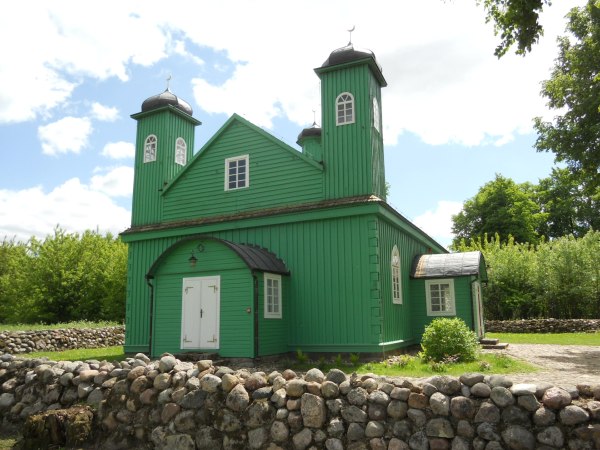Drive through many of the villages in the north east of Poland and the eerie silence might lead you to believe there is no-one left to tend the miles of flat farmland, stretching beyond the horizon in every direction. A handful of ramshackle wooden homes occupy well-defined plots along either side of the road. An occasional stork flying low overhead signals a rare sign of life in these sparsely populated borderlands.
Two of these villages close to the Belarus border are remarkable for their simple wooden mosques. These attractive old buildings in Bohoniki and Kruszyniany are the spiritual hub of Poland’s last remaining rural Tatar communities.
The Tatars arrived in Poland in the 14th century during the latter Mongol advances into Europe. In recognition of their loyalty to the Polish crown in military campaigns they were granted land by the King of Poland in the late 17th century and have lived here ever since.
Poland’s borders changed dramatically after 1945 and several traditionally Polish Tatar communities now found themselves across the Soviet border in Lithuania and Belarus. During the communist years religious education for all Poles, including the Tatars, was banned from schools and the practice of regular prayer fell away. Only these two Tatar villages now remain in Poland.
I meet the Imam of the Bohoniki mosque, Aleksander Bazarewicz. He is dressed in jeans and a grey fleece jacket and we sit in the main prayer room as he describes the challenges facing Poland’s Tatar community today. “The future depends on our young people. They have a very big responsibility. We need to communicate the importance of our Muslim values so that they remain enthusiastic to stay and support our community.”
There are currently around 4,000 remaining Tatars in Poland. Most are scattered around the north and east of the country, a result of successive migrations caused by Poland’s shifting borders. The Tatar language in Poland died out around 300 years ago, although there are new attempts to revive it among both adults and children. The Imam concedes that it’s an uphill battle to keep the culture alive, with young Tatars part of the overall Polish exodus across the EU. “We’ll need each remaining Tatar family to have 10 to 15 children to preserve our communities”.
I am invited to a nearby house offering agritourism breaks to visitors. Here I enjoy kolduny, a traditional Tatar dish of dumplings in broth, served by a young lady speaking perfect English; a result of spending several years working in London.
Half an hour away in the village of Kruszyniany, I meet Dzenneta Bogdanowicz, a cheerful lady with an ever-present smile. She offers eco-tourism breaks with a distinctly Tatar twist on her family-run farm. Visitors can enjoy some of the finest Tatar cuisine and learn about the cultural and sporting traditions of the Tatar people. There’s even a yurt in the farmyard. Dzenneta is particularly proud of the recent surprise visit to her farm by Prince Charles, who was fascinated by the small wooden mosque and greatly enjoyed his exposure to Tatar culture and cuisine.
The newly established Tatar Trail offers visitors a chance to explore these villages and other points linked to the Tatar heritage of the Podlasie region of Poland. By sharing their rich and eventful history with curious visitors, perhaps the Tatars are giving themselves the best chance to keep alive a way of life that has survived in Poland for over 600 years.
This article first appeared in Travel by Handstand in June 2012.





